With Lunar New Year just around the corner, let’s discuss the history behind Chinese New Year attire and how it has changed over time.
In the past, clothing like the qipao, Zhongshan suit, Tang suit and hanfu were commonly worn. Are you familiar with all of them? Have any of these past customs pervaded into the current day?
Historical Chinese New Year Clothing Beliefs
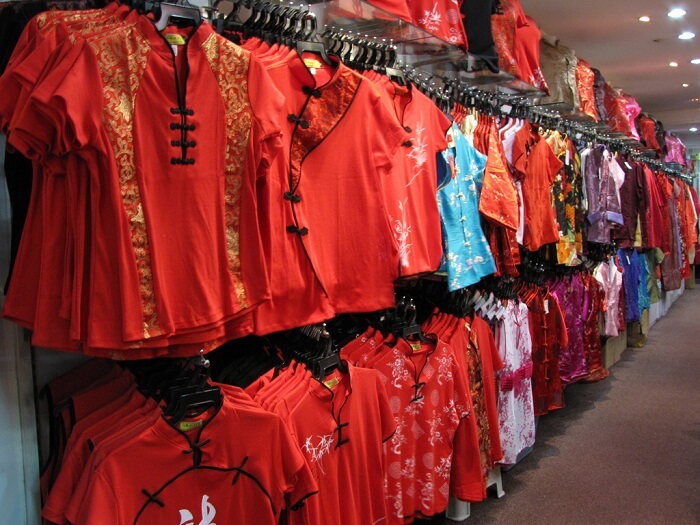 Traditional Mandarin collar tunics on display
Traditional Mandarin collar tunics on display
Traditionally, Lunar New Year customs consist of making new clothes for the new year.
In the past, people often had a few outfits they wore throughout the year. So new clothes were symbolic of removing the old and starting new beginnings, as well as an indicator of having enough.
Red was worn on the day of New Year’s since it is the color of good luck. It also scares away evil spirits that bring adverse fortune.
Historically, people would even wear red undergarments or red soles in their shoes to welcome good luck for the entire year.
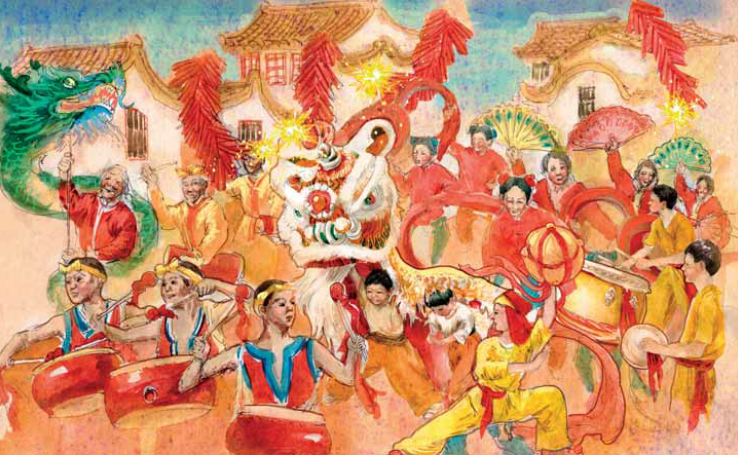 A Chinese painting of Lunar New Year celebrations
A Chinese painting of Lunar New Year celebrations
With these beliefs, it was often customary in the past for people to dress up in new, auspicious clothing to welcome the new year.
As decades came and went, different styles became popular in different time periods. Lunar New Year attire changed with it. Let’s jump into how traditional clothing adapted, from hanfu to the qipao!
Traditional Hanfu
Out of all traditional Chinese clothing, hanfu (汉服, hànfú) is the oldest, dating back to over 3,000 years ago during the Shang Dynasty (1600-1046 BCE). The word hanfu literally translates to “Han clothing,” as the majority of the Chinese people are of Han ethnicity.
Because hanfu permeates Chinese culture, it has been adapted throughout the centuries. It has become the national clothing of China. It even influenced the clothing of other Asian countries such as Korea, Japan and Vietnam.
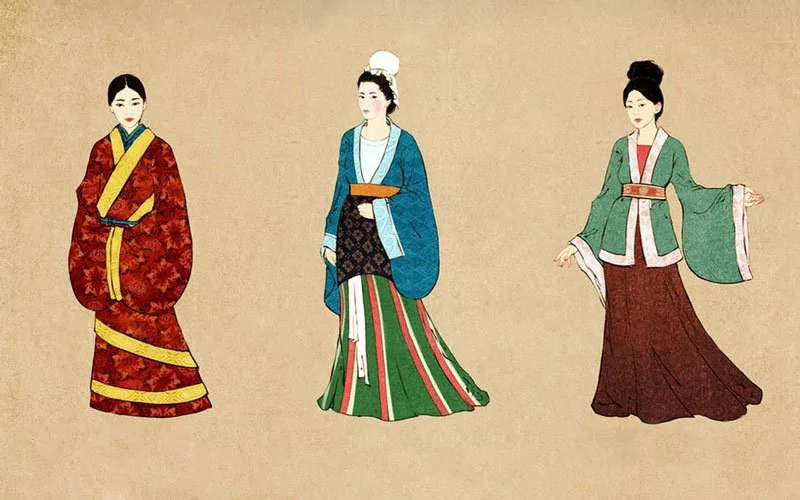 Hanfu in the Qin/Han dynasty, Jin Dynasty, and the Northern and Southern Dynasties
Hanfu in the Qin/Han dynasty, Jin Dynasty, and the Northern and Southern Dynasties
In the modern day, Chinese people rarely wear hanfu except for special occasions such as festivals and weddings. However many in the younger generations have renewed interest in the clothing, snapping photos for social media.
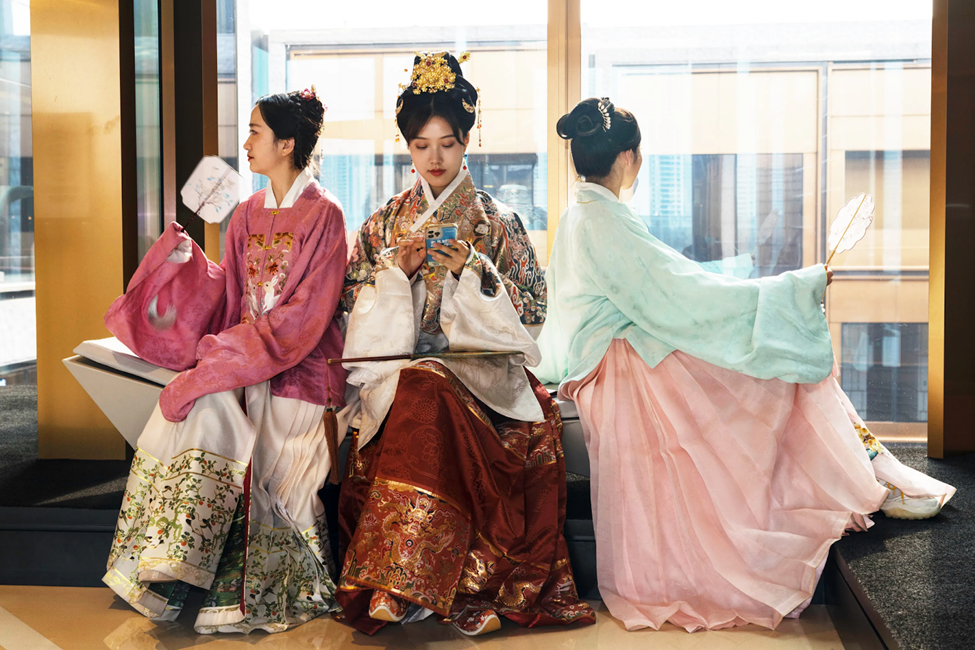 Influencer Shiyin wears a horse gown style hanfu
Influencer Shiyin wears a horse gown style hanfu
Hanfu is typically made up of several pieces. The upper body garment is referred to as yi (衣) or ru (襦) and is an open cross-collared shirt. The lower body garment is the qun/chang (裙/裳), a long skirt, or the ku (裤), trousers.
For one-piece outfits, you can wear a pao (袍), which is a closed body length garment, or a chang ru (长襦), a long skirt only worn by women.
There are many outer garment options, though the most common were shan (衫), an open cross collar jacket; banbi (半臂), a half-sleeve waistcoat; and ao (袄), a layered cross collar jacket.
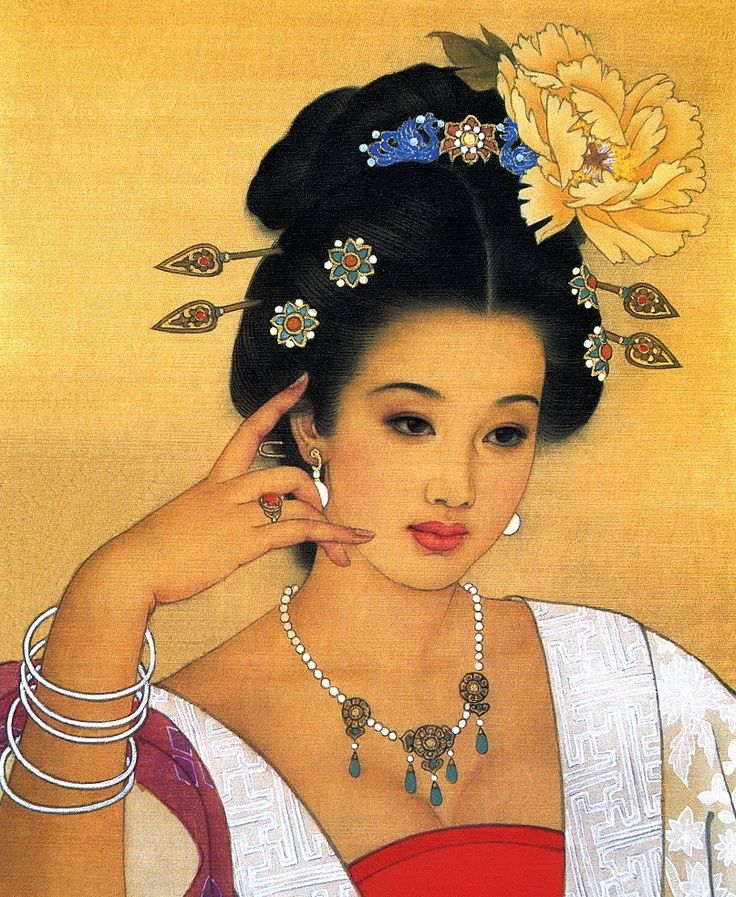 Painter Wang Mei Fang’s portrait
Painter Wang Mei Fang’s portrait
In the upper class, hanfu were also decorated with ornaments referred to as pei (配, decorate). This would include extravagant headpieces and hats, jewelry, or belts/sashes worn around the waist.
Pei were used to indicate social status; the more extravagant, the higher social standing you held.
Tang Suit
The Tang suit (唐裝, tángzhuāng) is a men’s jacket that dates back to the Qing Dynasty (1644-1912). It is based on the Manchurian magua (马褂, horse gown).
During this dynasty, the Tang suit was one of the mandatory uniforms for government officials and scholars, lending to its popularity.
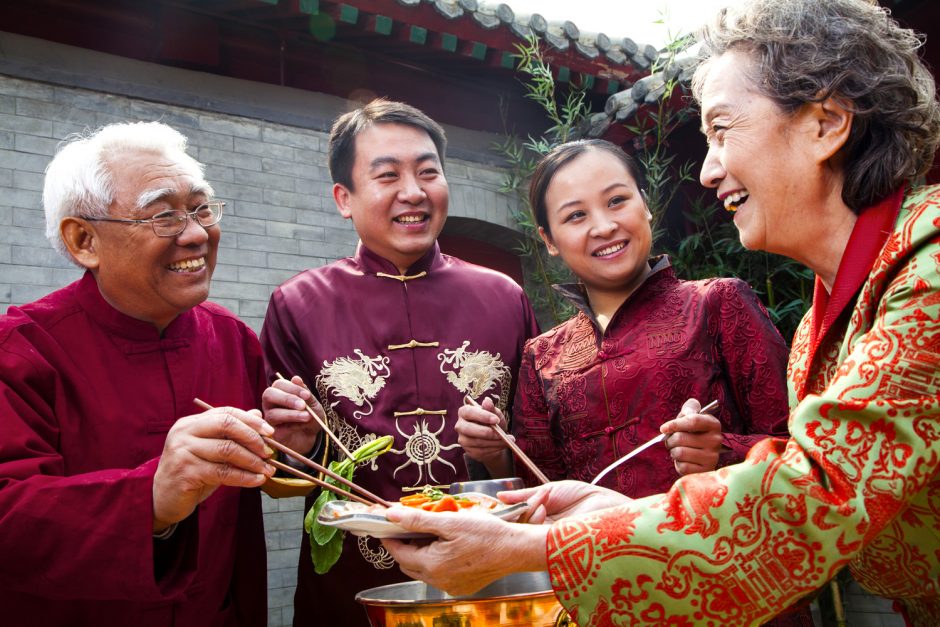 A group of elders wearing the Tang suit
A group of elders wearing the Tang suit
The jacket is adorned with frog buttons running down the front and features an upturned Mandarin collar. As seen in the photo above, frog buttons are made of tightly knotted cords that loop together.
The Tang suit is typically made with colorful silk covered in complex designs. Many are decorated with auspicious Chinese characters.
This is more commonly worn by older, more traditional generations. However I remember my younger male cousins wearing the Tang suit for Lunar New Year.
Zhongshan Suit
 Mao Zedong and Chiang Kai Shek in the Zhongshan suit
Mao Zedong and Chiang Kai Shek in the Zhongshan suit
The Zhongshan suit (中山裝, zhōngshān zhuāng) is more modern, dating back to the early 1900s.
It was named after the first Chinese president, Sun Zhongshan (孫中山, sūn zhōngshān) also known as Sun Yatsen (孫逸仙, sūn yìxiān). However this suit may also be referred to as the Mao suit (毛裝, máo zhuāng) due to how often Mao Zedong (毛澤東) wore it for public appearances.
When the Chinese Republic was being founded in the 1910s, traditional Chinese clothing became unpopular during a time of modernization. This suit was a blend of European and Chinese clothing styles.
The Zhongshan suit can be made in many different colors, but they tend to lean towards solid black, white, navy or gray. It is made with four pockets in the front equally spaced apart, five buttons running down the front and three buttons on either sleeve.
Although not as commonly worn during Lunar New Year as the other three, it is known for its versatility and can be worn for both casual and formal events.
Qipao/Cheongsam
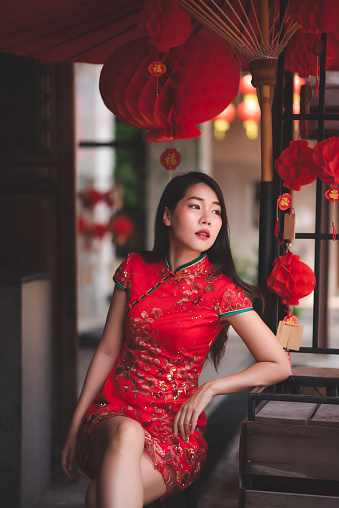 A modern qipao/cheongsam dress
A modern qipao/cheongsam dress
A form of traditional Chinese attire that continues to be fashionable to this day is the qipao (旗袍, qípáo), or cheongsam (長衫, chángshān) in Cantonese.
Like the Tang suit, the qipao was created in the Qing Dynasty (1644-1912) but reached peak popularity from 1920 to 1940 as it drew in Western audiences.
The modern image of the qipao is different from its more conservative origins. It was adapted from Manchurian gowns for women, which were boxier and often covered all of the body.
Later, the cheongsam went through many changes and often had different features based on regions, with different styles emerging from Beijing (北京, běijīng), Shanghai (上海, shànghǎi) and Hong Kong (香港, xiānggǎng).
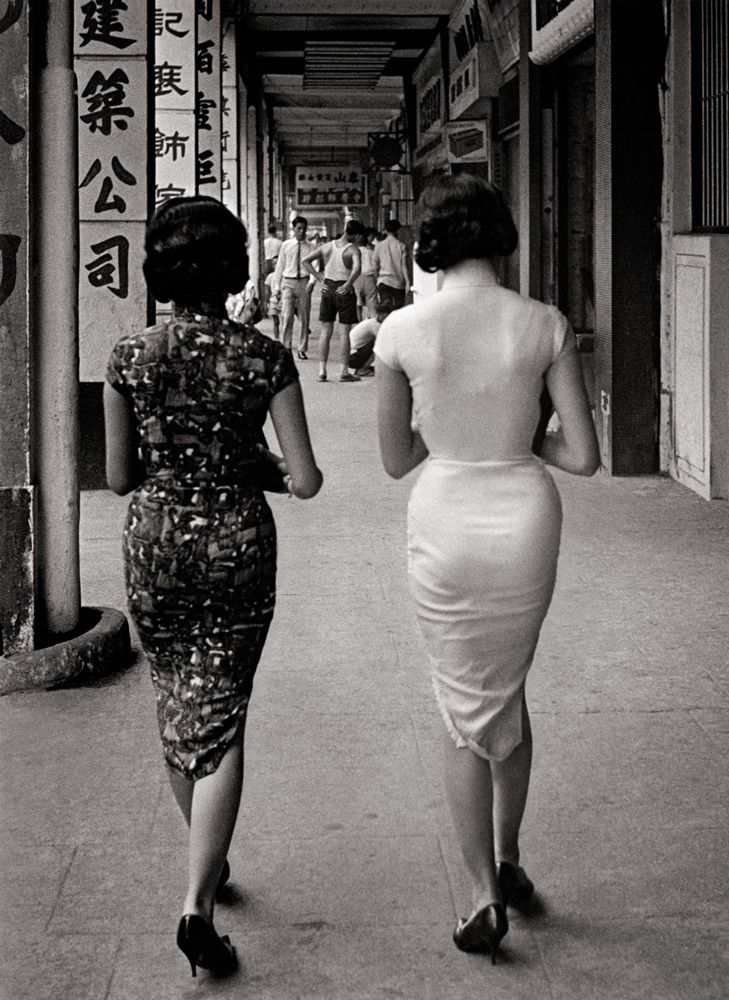 Two women wearing qipaos in 1950s Hong Kong
Two women wearing qipaos in 1950s Hong Kong
The qipao is a tightly-fitting silk dress with a high neck. Its design is similar to the Tang suit, with colorful and elaborate designs. The dress typically features short, capped sleeves with a side slit running up the skirt.
Beijing’s variations are more conservative and cover more skin, but are often composed of more complex patterns and vivid colors. Shanghai’s variations are shorter and more modernized with Western components.
Finally, the most renowned style is the Hong Kong variation. It was influenced heavily by European style and popularized by celebrities and media. The Hong Kong qipaos usually have shorter capped sleeves with more simple decorations.
Of the three traditional Chinese New Year attires, this is more commonly worn in the modern-day because of its more contemporary silhouette and design. My cousins and I used to wear our qipaos to school for the new year when we were young.
Modern Chinese New Year Attire Customs
 A family dressed in traditional attire
A family dressed in traditional attire
So what Chinese New Year clothing traditions continue into the modern-day?
New clothes are a way to commemorate the New Year’s custom of removing the old and welcoming the new. Because of this, it is now common to purchase new clothes instead of making them by hand.
In the end, no matter how you get them, new clothes should be worn on the first day of the Lunar New Year.
However for some Chinese people, particularly the Cantonese, it is considered bad luck to purchase new shoes for Lunar New Year. This is because the word for shoes (鞋, xié) is a homophone for bad luck (邪, xié).
As usual, red is still an important color to wear on the Lunar New Year as it symbolizes luck, happiness and celebration. It’s also believed to be an auspicious color.
If it is your zodiac year — remember 2022 is the year of the tiger — it is encouraged to try to wear red in your outfits for the remainder of the year.
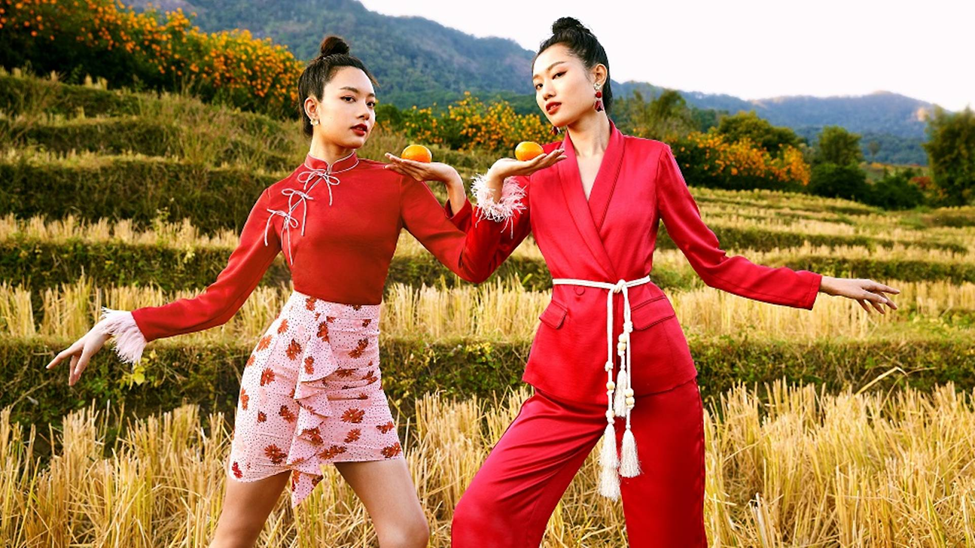 Pomelo New Year 2020 Collection
Pomelo New Year 2020 Collection
While traditional attire used to be commonly worn during the new year by older generations, Chinese people seldom wear them anymore. However with a recent renewed interest in traditional clothing, younger people have started to incorporate older designs into more modern styles, blending the two.
Why not try to update your Lunar New Year look with some traditional inspiration?
[zombify_post]

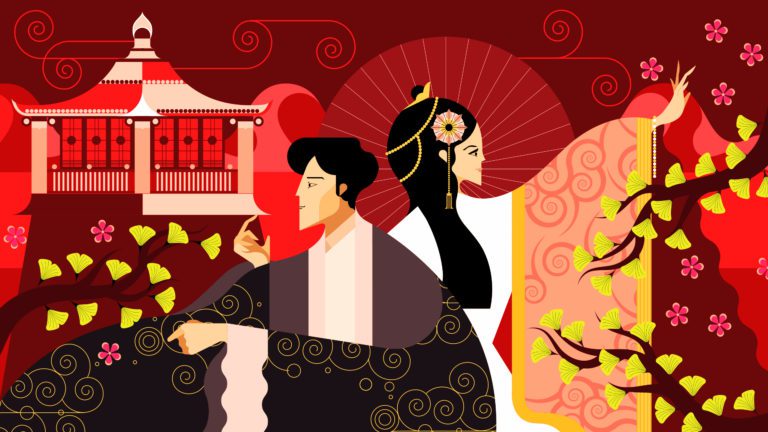
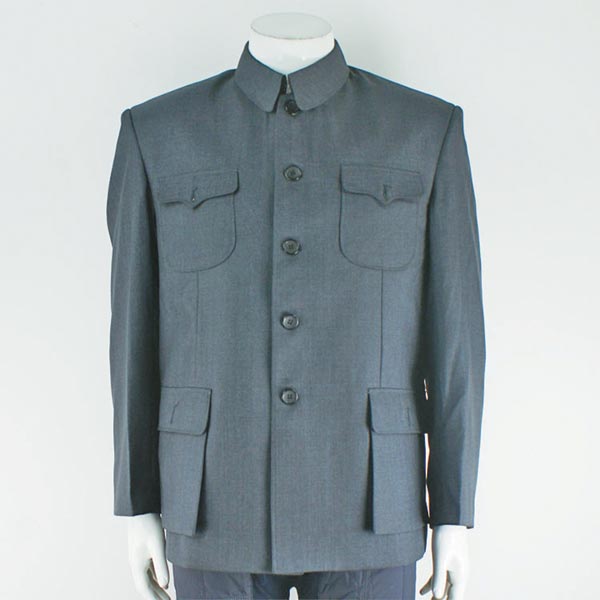
0 Comments